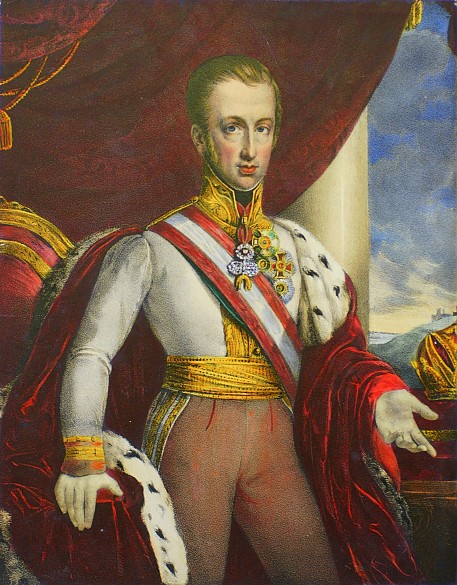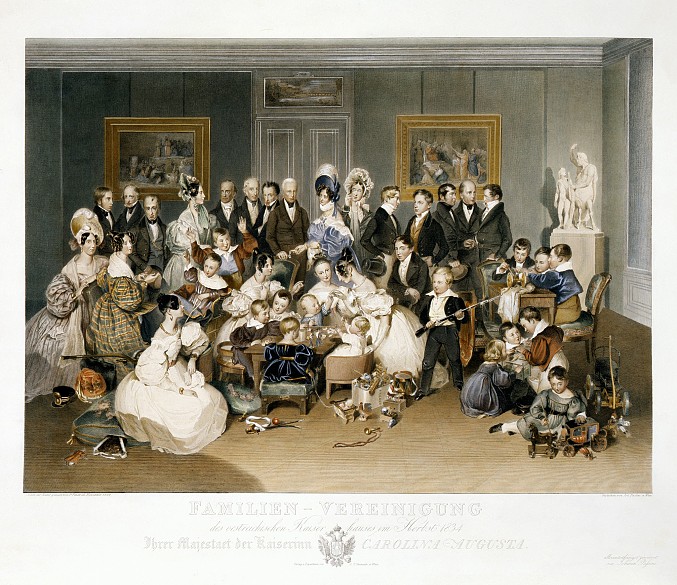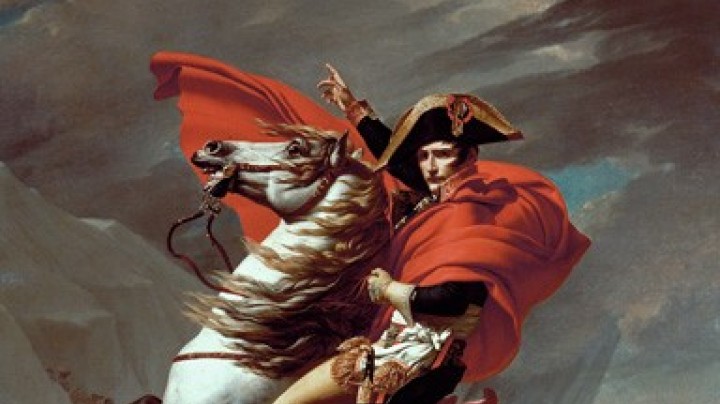Ferdinand: A malfunction in the House of Habsburg
Born in Vienna on 19 April 1793, Ferdinand was the eldest son of Emperor Franz II (I) and his second wife, Maria Teresa of Naples and Sicily. Both his parents were related to each other several times over, a circumstance that may very well explain their eldest son’s severely debilitated constitution.
Ferdinand suffered from severe epilepsy and hydrocephalus or water in the brain, which made his head abnormally large and in curious disproportion to his rather puny frame. His physical limitations were allegedly accompanied by general mental disability.
No suitable treatment existed for his condition, and the backward young boy was not encouraged or stimulated in any way. An account describing the nine-year-old archduke gives a dismaying impression: Ferdinand was evidently incapable of pouring himself a glass of water, opening a door or climbing stairs unaided.
Little could later be done to remedy these deficits in the young archduke’s development. The extent of Ferdinand’s mental and physical retardation is variously portrayed by his biographers. Some see him as a complete mental and physical wreck, citing him as a negative example of inbreeding over generations within the Habsburg dynasty, while other more favourably disposed authors claim that he had artistic talents and was interested in the natural sciences and technical innovations. They also point to his gifts as a linguist: Ferdinand is said to have spoken five languages.
An appealing – but most probably apocryphal – anecdote that characterizes the naive eccentricity of this Habsburg recounts Ferdinand’s astonished reaction when presented with an eagle shot on a hunting excursion. He allegedly refused to believe that it was an eagle as the only kind he knew was the one on his coat of arms, which had two heads.
In keeping with legitimist and monarchical principles, as the first-born son he was eventually confirmed successor to his father on the throne. At the age of twenty-five he made his first public appearance as his father’s official representative and was henceforth regarded as crown prince, a position that no one had thought him capable of assuming on account of his physical and metal debilities.
In 1831 Ferdinand was married to Maria Anna of Piedmont-Sardinia (1803–1884) from the House of Savoy. She was a daughter of Vittorio Emanuele I (1759–1824), king of Sardinia and duke of Savoy, and Archduchess Maria Teresa of Austria-Este (1773–1832), a granddaughter of Empress Maria Theresa. The bride was thus once again a distant relation of Ferdinand. Maria Anna was devout and meek; aged twenty-seven she was already regarded as ‘old’ and thus not in a position to be particularly choosy. Nonetheless, on first encountering her future husband she is said to have been shocked at his condition. When Ferdinand suffered a severe epileptic seizure during the nuptial ceremony, his father commented drily “May God have mercy!”
Anna Maria mastered her fate at her husband’s side with admirable composure, referring to herself as her husband’s nurse. Later on as empress Maria Anna acquired great popularity thanks to her amiable disposition and work for charitable causes. The marriage remained childless.
In 1832 Ferdinand narrowly escaped an attempt on his life in Baden. While he survived the assassination attempt unharmed, he was badly affected by it psychologically. The incident was a sign of just how deceptive the seeming peace of Biedermeier-era Austria was.














